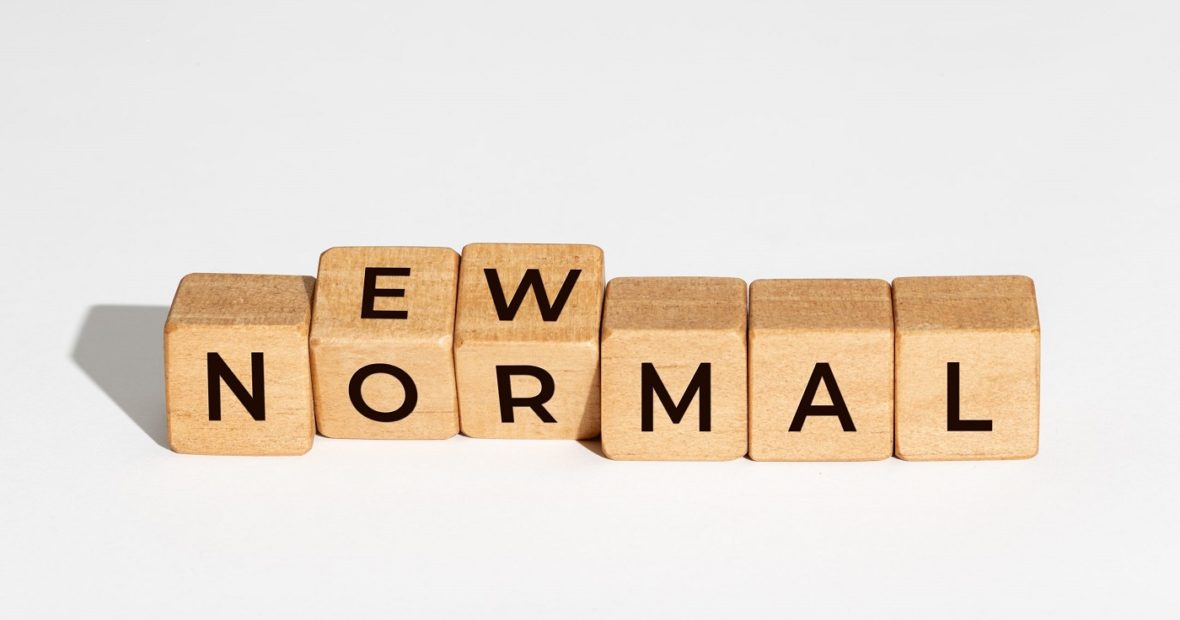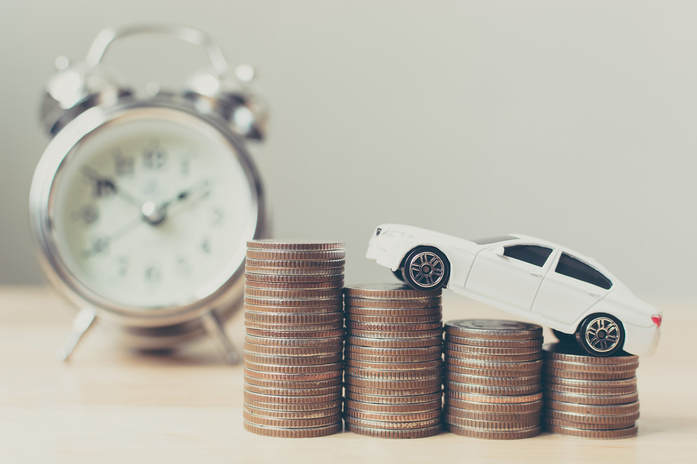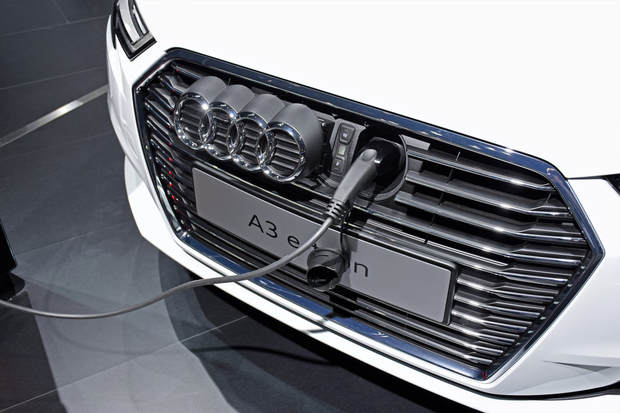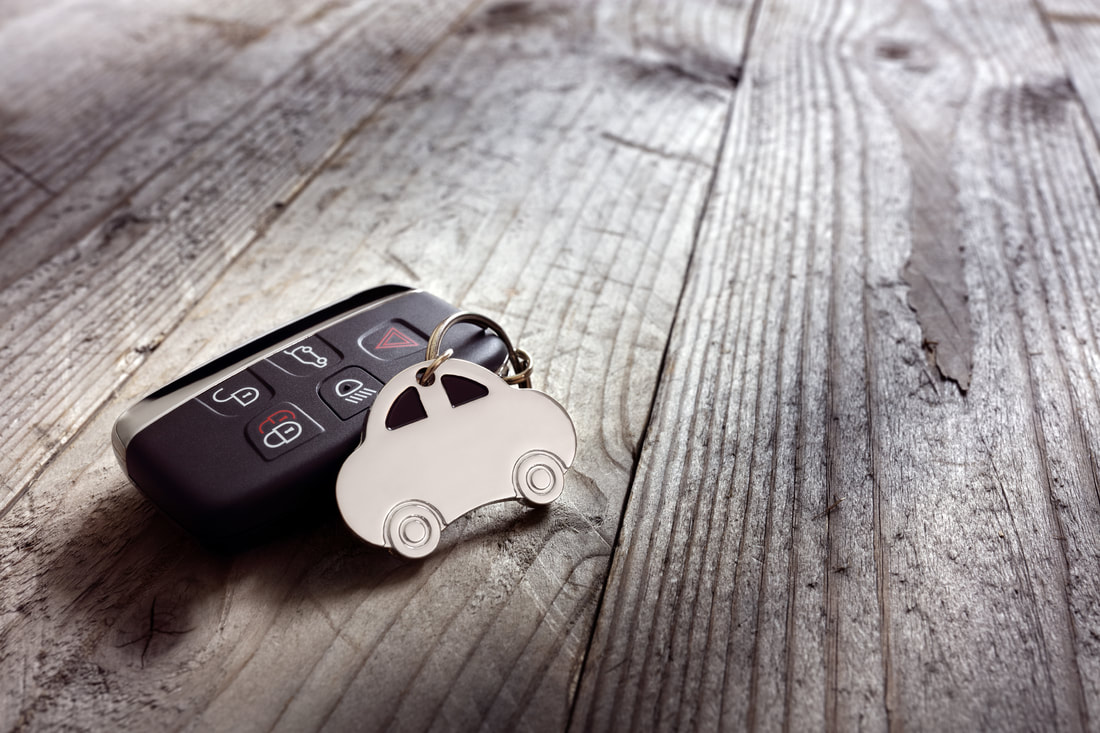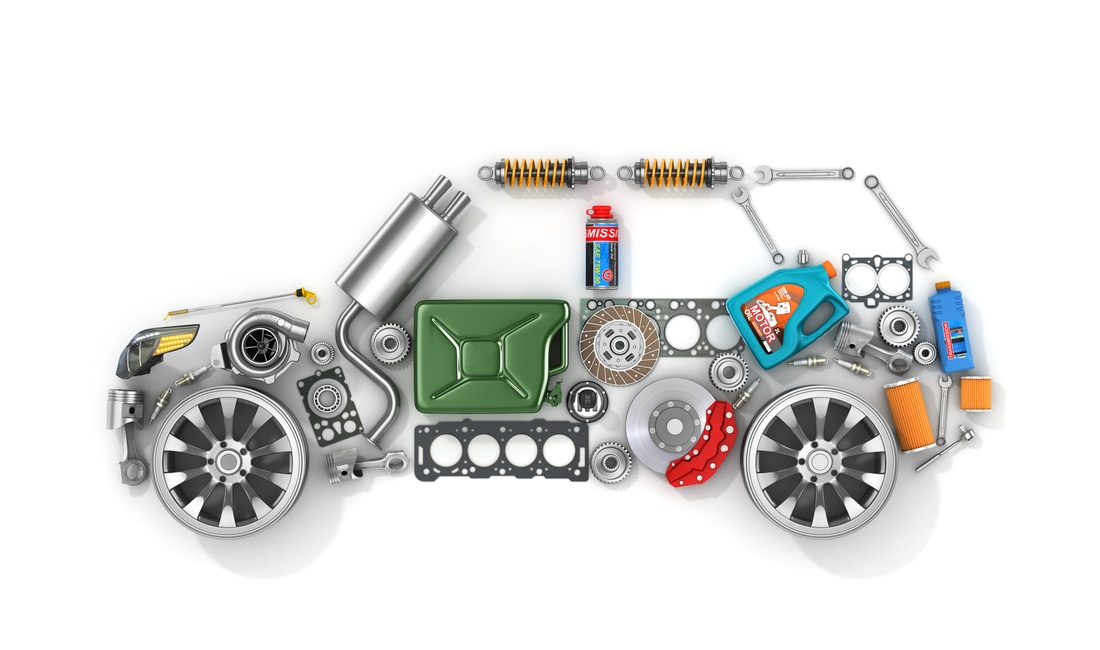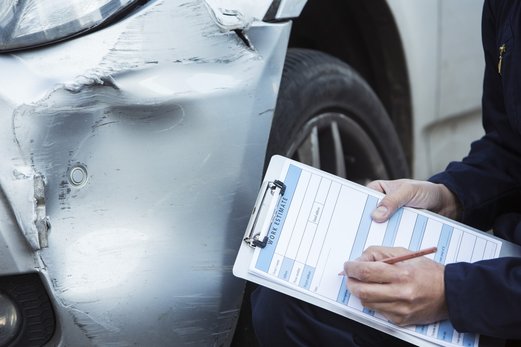|
In the competitive landscape of auto body repair, standing out as a provider of exceptional repair quality is paramount. One significant way to distinguish an auto body shop is through obtaining OEM (Original Equipment Manufacturer) collision repair certification. This certification is more than just a badge of honor; it signifies a commitment to maintaining the highest standards in repair quality and safety. For vehicle owners, it offers peace of mind, knowing their car is being repaired to the same specifications it had when it first rolled off the assembly line. This adherence to OEM standards ensures that vehicles retain their value and integrity after repairs, a crucial consideration for any car owner.
For auto body shops, the benefits of OEM certification extend beyond customer satisfaction. It opens the door to a new level of professional recognition and credibility in the industry. This certification requires technicians to undergo specialized training and use specific repair techniques and tools, ensuring that they are up-to-date with the latest advancements in automotive technology. Consequently, certified shops are often the preferred choice for insurance companies and customers alike. The investment in OEM certification underscores a shop's dedication to excellence and positions it as a leader in the field of collision repair. Moreover, OEM auto manufacturer collision repair certification is essential in today's rapidly evolving automotive landscape. With the advent of advanced safety features and complex electronic systems in modern vehicles, the importance of precise, manufacturer-approved repairs cannot be overstated. Incorrect repairs can compromise vehicle safety and functionality, putting drivers at risk. By adhering to OEM specifications, certified auto body shops ensure that all vehicle systems work harmoniously post-repair, maintaining the manufacturer's intended safety, performance, and aesthetic standards. In summary, OEM certification is not just beneficial but critical for auto body shops aiming to provide the highest level of service and safety to their customers, while also securing a competitive edge in the market. Victory Auto Body & Paint is proud to have just become an OEM certified collision center for Subaru of North America. If you are the owner of a Subaru vehicle, we are your stop for collision repair. It's been a little over a year or so (since this writing) that the world re-emerged from the reality-altering twister that was Covid. It wasn't easy for anybody. A lot changed, but to keep this post succinct and to the point, we'll stick to what's relevant to auto body work and collision repair, and what it now takes to fix your car after an accident.
Delays. That's really the most important word. Delays in getting your car back quickly. But is it only body shops that are delaying things? Ask yourself how long does it take to see a specialist if you need medical care? How long does it take to get those windows you ordered for your home? You can ask yourself questions like this all day long. JD Power released a new study showing the average repair time for body shops as of October 2023 has increased to 23.1 days, meaning it takes 23.1 days from the day you drop your car off to the day you get it back. That number was 12 days in 2021. This means it takes twice as long to get your car repaired in 2023 than it did just 2 years ago. But why? Parts shortages and labor challenges are the two main contributors to this, unfortunately, and there's not much that can be done about it. Why are parts hard to come by? Well, we don't have a clear and easy answer, but for some reason, after Covid, the whole chain of making, shipping, and delivering parts got disrupted. Whether the materials needed to make the parts are now harder to come by (probably because of their own part and labor challenges), or whether the logistics of moving these parts around the world got shaken up so hard that it still hasn't fully recovered, we can't quite say, but it's a combination of these factors and likely other reasons as well. As for labor challenges, in 2023, finding skilled technicians is not easy. People just are not entering the skilled labor workforce like they used to, and at the same time the volume of accidents keeps increasing, so you do the math. Young talent is gravitating more towards making YouTube videos, not re-sculpting a metal panel, but Victory Auto Body has begun mentorship offerings to young people looking to develop new skills to help fill these gaps. As for Victory Auto Body, we remain steadfast in our commitment to facing these challenges head on. It's been 40 years, and we are still here, we are still answering the phones, we are still swinging hammers and shooting the paint, and we are going to keep marching forward. So if you need help with your car, whether it's a small ding or a major accident, give us a call, we are here and ready to help. Your car needs to be repaired, and you're wondering, how long will it take to fix? How much will it cost? Is there a chance that these factors change? These are all good questions to ask when it comes to auto repair. As you know, cars aren't just four wheels and a seat, they're a lot more than that, especially modern cars (say, anything built after 1990), which are more like rolling super computers rather than simple A-to-B transportation.
The answers to these questions are unfortunately not always initially clear, which is understandably a source of confusion and frustration. Why is it going to cost more? Why is it going to take another 3 days? Who's paying for this? The truth is, nobody knows until the repairs get started and the damage is further investigated. Regarding the additional damage/increased cost question, we ask, what happens that causes these figures to change? Let's go through the process one step at a time:
Next we address the repair timeline. If additional damage is discovered, it's clear that it will take longer to fix than initially anticipated. How much longer? Well, that comes down to how much additional damage there is. Specifically, timeline changes/delays are caused by:
The practice of evaluating damage is increasingly difficult as cars become more and more complex. The introduction of Advanced Driver Assist Systems such as speed-sensing radar, lane departure warning systems, collision preventing auto braking systems, and much much more, cause repair complexity and overall severity to increase, which makes having a perfect initial estimate that much more difficult. The goal is to minimize supplements as much as possible, but sometime they're unavoidable. Either way, it's best to have trained and experienced technicians and damage evaluation teams to take care of your car (like us). Thanks for reading! If there is any indication of where the future of automotive technology is headed, the vehicle showcase at the 2018 Geneva Motor Show shows us that cars and transportation technology is about to make a big leap forward. The long-established internal combustion technologies that made the horse-and-buggy antiquated are now themselves falling by the wayside, as the next generation of propulsion, in the form of efficient and torquey electric motors (and more importantly the batteries that power them), begin to prove themselves. Automakers have made no secret of the fact that they are slowly moving away from traditional gasoline and diesel burning cars. A combination of energy efficiency, government-regulated emission standards, and changing consumer tastes have ramped up the development of electric cars. Nearly all major automakers have committed billions of dollars to electric vehicle development, and by the middle of the next decade, most new cars released for sale will either be fully electric, or an advanced hybrid system that relies mostly on the electric motor. Electric motors and electric vehicles are not new; the technology has existed for well over a century, so why you may ask, are electric vehicles suddenly becoming so popular? The answer is battery technology. Recent advances in battery technology have led to batteries that have higher charge density, as well as faster discharge rates, meaning you don't have to plug your car in every 20 miles, or be permanently stuck in the slow lane because your car doesn't go faster than 40 miles per hour. You can chalk up the explanation to this: people will not compromise their gasoline cars for something that's slower and travels fewer miles. The electric car not only has to be as good as a gasoline car, it has to be better than a gasoline car, in order to convince people to switch, and we are finally beginning to reach that tipping point, hence the proliferation of electric vehicles that we're beginning to see. In addition to what drives the car, this year's Geneva showed us what are known as ADAS, or Advanced Driver Assist Systems. ADAS exists in some forms on vehicles currently on the road: lane departure warning, automatic braking, blind spot monitors, Tesla's "AutoPilot", and other similar systems, today found mostly as optional or luxury extras, will soon become standard on all new vehicles. The pinnacle of ADAS will be full automation, where the car will drive itself. We are only a few years away from that being a reality, and there will soon be a day when driving your own vehicle will be a rarity. One thing not lacking this year at Geneva: beautiful cars. Automakers can't seem to produce enough downright stunning vehicles. We suppose that given the extreme competitiveness of the automobile market, companies just cannot get away with making ugly cars anymore, so although we may one day lose the visceral appeal of a roaring combustion engine, we seem to be regaining the visual artistry that once dominated automotive design. Until next time.... Happy Motoring! If you've been involved in a car accident, or have incurred damage to your property, there is a likelihood that you might need to use either your insurance policy, or the policy of someone who caused damage to your property, to pay for the repairs. The insurance company however will not cover the entire cost of the repair, only a portion of it. So who pays the rest? You may have to. Your portion of the cost is known as your deductible, and we will be discussing different types of deductibles today, as well as when and if they apply to you.
If your car repairs are going to be paid for by an insurance company, there are two types of claims your particular claim can be categorized as. The first is a collision claim, and as the name suggest, means a car was wrecked, particularly due to human error. Scenarios that would qualify as a collision claims include: you wrecking your car by driving into a stationary object; you wrecking your car by hitting someone else's car; lastly, your car being wrecked by someone else hitting your car. The second type of claim is a comprehensive claim. These claims include damages to your car caused by events other than collisions. Acts of nature such as fire, hail, flooding, or wind, which cause damage to your car, are considered comprehensive claims. Vandalism of your car, or theft, are also considered comprehensive claims. Essentially, if the car was damaged in a way not caused by an outright collision is considered comprehensive. A common type of comprehensive claim that we see is wind causing a tree to fall onto a car. A deductible can be thought of as a copay, same as when you visit your doctor. You pay the doctor a relatively small fee upon your visit, and the doctor then bills the remaining charges directly to the insurance company. Please note: Insurance deductibles for auto body repairs are collected by the auto body repair shop at the end of the repair, not up front. An insurance deductible is paid for by the insured, when fixing their own vehicle. A common misconception is that you must pay your deductible, if, say for example, you hit someone else's car and they are claiming the repairs through your insurance policy. Remember, you only pay the deductible when fixing your own car. If someone else is making a claim against your policy, you do not pay your deductible to fix their car, only your car. Depending on your insurance policy, your deductible amount may be different depending on the type of claim. When purchasing your policy, you may have elected to have different deductible amounts for collision and comprehensive. Please check your policy for the exact numbers. Finally, a very common question we are asked is, do I need to pay my deductible is someone else hit my car? The answer is, that it's complicated. This can go two ways: 1) you file an insurance claim for the damages through your insurance company, or 2) you file an insurance claim directly through the insurance company of the person who hit you. If you filed the claim through your insurance company, you will have to pay your deductible, even if the accident was not your fault. However, and this is a big however, once the insurance companies settle on who was at fault, and the insurance company of the person who hit you accepts liability for the damages, they will pay your deductible for you. Your insurance company will collect your deductible from the other person's insurance company. This might happen while the vehicle is still being repaired, which means your deductible will be waived, and you will have nothing to owe upon picking up your car. If the collection process, known as subrogation, takes longer than the repair, then you will have to pay your deductible, but the insurance company will reimburse you later on once the subrogation process is complete. If you filed a claim directly through the other party's insurance policy for an accident that was not your fault, and that person's insurance company accepts fault and liability, then you will not have any deductible to pay. We hope this piece on deductibles helps, as it is a common point of confusion. Remember, if you have any other questions that we have not discussed, you can reach out to us 24/7/365. We are here to help you. Thanks for reading. Cheers!  If your car needs to be in the shop for repairs, you might be wondering how long it will be out for. Your car is your gateway to getting things done, and you need it back as quickly as possible. Whether it's running errands, getting to work, or enjoying leisurely travel, you are stuck without your vehicle, and hope that the auto body repair shop understands your need to have it back sooner rather than later. Today we will discuss repair timelines and how long it will take to have your car returned back to you. The big question here is, how severe is the damage? Are we talking about small cosmetic damage, like some scratches or a small dent, or major denting and multiple broken items? How about the extent of the damage? Is the damage isolated to just one panel, or are multiple panels affected? What about the car's different systems (e.g. the body, the mechanical components, the electrical components, etc.)? Is it just body and paint work that we're talking about, or will the repair be more involved than that, including engine work, suspension work, airbags, and electrical/programming work? Lastly, will parts needs to be replaced? If so, are the parts readily available? These are the questions that will dictate the overall turnaround time of the repair. First, we want to discuss the overall severity of the damage. Small cosmetic damage usually does not require much time to repair. A simple scratch in the paint, or a golf ball-sized dent in a panel, will take about 4-5 days (for the first panel, and 1-2 days extra per additional damaged panel), from dropping your car off to picking it back up, to fix. This might seem like a lot of time, but let's break it down to truly understand the process:
What if the damage involves more than just cosmetic dents and scratches? What if the damage involves the frame, suspension, engine/transmission, airbags, or other components that are occasionally, but not commonly, damaged.
Next, we consider the extent of the damage. For each additional panel that is damaged, a safe bet is to add another day to the process. Example: damage to one door will take about 4-5 days to repair, but damage to two doors will take about 6-7 days. If the whole side of a car needs to be repaired and repainted, 2 weeks is a safe bet. The big question here is, how much of the car has been damaged? The answer to this will dictate the overall repair timeline. Lastly, we must consider damaged parts that need replacement. This part of the repair can occasionally cause a logjam, where the vehicle is otherwise ready to be repaired, but the parts are not immediately available. Depending on the car, the manufacturer may or may not have the parts on hand and this can extend the repair timeline. Typically, parts that are not immediately available the same day can be procured by the following day, thus a 1-2 day waiting period is common until all the parts have arrived. To ensure a faster repair, we can arrange for parts to be ordered ahead of you dropping off your vehicle for repair, which will shorten the time until you get your car back by at least one day. If you're wondering how long your repair will take, a 5 minute consultation with our staff will answer all the questions you have, but we hope this guide is a good starting point. Thanks for reading, cheers!  Every once in a while, we like to put our wrenches down and spend some time relaxing, enjoying time with family and friends, and maybe even going somewhere fun. This journal entry is about one of those "somewhere fun" places. This place is called Angeles Crest Highway, an old, tucked away access-road that cuts right through the middle of the amazing San Gabriel Mountains National Monument. The San Gabriel Mountains are a massive series of mountain ranges that span the northeast of Los Angeles, and they contain within them a forest wonderland that offers any recreational activity you could possibly want: hiking, fishing, biking, swimming, skiing, bungee jumping, observatory telescope viewing, and even coffee. But, there is one activity that ties all of those things together, and some might even consider it the best activity of all. The 2 East, also known as Angeles Crest Highway, provides both driving thrills and access to noted destinations in the mountains. The mountain pass provides roughly 60 miles of windy, sweeping roads with incredible mountain vistas and breathtaking panoramic views of the LA basin. For the motoring enthusiast, this is where you come to exercise your car, pushing the accelerator and climbing the elevation all while passing ancient forests and volcanic remnants of the past. The long road leads you to other lost destinations that are hidden within the mountains. About 15 miles in, a road branches off from the main highway. The road itself is an exhilarating driving course that will see the road surface narrow dramatically, and the twists in the road becoming much more abrupt. This is Mt. Wilson road, a 7 mile stretch shrouded under mammoth pine trees that will lead you to the storied Mt. Wilson Observatory, a once cutting edge scientific research facility that the likes of Albert Einstein have visited. Fun tip: you can reserve the observatory for viewings on their website. Keep going on the main highway though and you will quickly notice the air temperature changing. You are really climbing now and the landscape changes. Suddenly the density of trees rises, and they are greener and more lush. The mountains in the distance are bigger the deeper we push into the San Gabriels. At this point you might be feeling hungry, or thirsty. About 30 miles into the mountains, you will find a tucked away cottage that is famous to motoring enthusiasts as the Sunday meet-up spot to park their vehicles and hang out under the trees. Newcomb's Ranch is the name. What formerly used to be an actual working ranch back in the frontier days of the wild west is now a restaurant that serves up breakfast and lunch for the intrepid mountain adventurer. Beyond Newcomb's Ranch lies territory that few venture to. The elevation keeps going up and the scenery only becomes more beautiful. If you come in the winter, you might find yourself in a winter wonderland, a picturesque scene of snow covered pines and wildlife in the background. The mountain sports two separate ski areas that are open depending on weather conditions, but are just another notch in the belt of this amazing place. Animals that you could not have possibly imagined living an hour outside of Downtown Los Angeles call this place home. Bears, mountain lions, coyotes, and even bighorn mountain sheep (the LA Rams name totally fits). Do not be afraid, they are rarely seen and keep to themselves, but always be careful. Keep pushing and you will find yourself at the base of the tallest mountain in all of California, Mt. San Antonio, but colloquially known as Mt. Baldy.
Towards the end of the road, you will start coming back down to sea level and ask yourself if you just traveled through a time portal, a road that just took you to another time and place, and the answer to that is yes, yes you did. What was once a commonly visited mountain retreat is a now a semi-forgotten destination for only the most daring, but it should not be seen that way. Angeles Crest and the San Gabriel Mountains are still a destination not to be missed by both Los Angeles natives and visitors alike. Skip the celebrity sight-seeing tours and come here instead, you will be glad you did. Cheers! Just because your car is unavailable to use does not mean you can stop running errands, or stop going to work or school, and it certainly does not mean you have to cancel that road trip you were looking forward to. You still need the use of a car, so what options do you have while your car is being fixed? The need for a rental car is a common request, so we will discuss what options you have to keep your life moving while your car is being fixed.
The most common question we are asked regarding rentals is: who will pay for it? The answer varies depending on who will pay for the repair itself, and this can go number of ways:
Another question we receive is, how is the rental set up and coordinated?
Lastly, if you need a specific type of vehicle, please do not hesitate to ask for one. Another common question we hear is, what type of rental cars are available?
We hope that this guide answers some questions regarding rental cars, however, if you need further clarification on your specific rental needs, please contact us at any time and we will work with you to get you back on the road quickly. Cheers, and thanks for reading! feel the same? If parts need to be replaced, what type of parts will be used? These are all great questions, and the answers to these questions play a role is how your car will look and feel after it has been repaired. Not all parts are created equal, so we will briefly discuss the differences in the parts that will be used to restore your car back to pre-accident condition.
Parts vary by their origin, their condition, and their availability at the time of repair. Depending on the specific requirements for the vehicle, various different parts may be used to ensure a safe, complete, and efficient repair. The three types of parts available to repairers are new factory original parts (also known as new OEM parts), recycled (or used) OEM parts, and new non-OEM (or aftermarket) parts.
Every individual repair requires a unique approach to ensure the vehicle is repaired safely, efficiently, all while taking a zero-compromise standard to work quality. At Victory Auto Body, we elect to use only parts that look, feel, and are of the same quality to the ones that are on your car, and we will not repair a vehicle unless we determine that it will be completely restored to pre-accident condition. Your vehicle will look, feel, and behave the same as you know it. Cheers, and happy motoring! But what is the next step in having the insurance company process the claim and pay for the repairs? Having an estimate written for the damages is the first step in having your car repaired. You may be asking, what does this consist of, how long will the process take, who handles the communication with the insurance company, and what do I do after the estimate has been written and submitted to my insurance? These are all common questions that we hear every day, therefore we have put together this comprehensive guide to help you navigate this process.
What does getting an auto body estimate consist of?
How long will the estimate process take?
Who handles the communication with the insurance company?
What do I do after the estimate has been submitted to the insurance company?
Once the estimate has been submitted, call or email us and we will schedule a drop-off date for repairs that works best for you. Cheers! |
|


